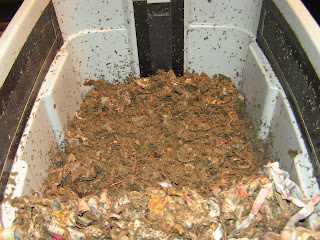Worm Fancy has been serving the Sacramento area for over 10 years and it is time for the next adventure. I am trying to not be sad for this small business, but instead be happy for all the people that we got to expose to the world of worms and worm composting. I am grateful to our current team partners like the City of Sacramento (Thank you Doug Huston), Sacramento Community Gardens (Thank you Bill Manord), Green Restaurants Alliance Sacramento 'GRAS' (Thank you David Baker), Republic Services (Thank you Annah Rulon, Anthony Smith, Brandon Colldeweih) and Living Resources Company (Thank you Steve Zien). We also had support from the folks at CalEPA, Soil Born Farms and the Sacramento Zoo. There were also countless teachers and parents that got us into so many classrooms and in front of children from pre-school through college. Honestly after 10 years the list is so long I can't even begin to mention everyone. The group of people here that I was blessed to get connected with has been life changing.
Our dream of being Homesteaders is finally starting to happen as we are about to close on 100 acres in Oregon. It has been over 10 years since we have been growing food on our tiny 1/16 of an acre in the Sacramento Suburbs. We obviously compost a huge amount of waste and I feel so proud when our trash can has one bag of trash for our family of 4 per week. We put in rainwater collection systems where we could store over 1200 gallons of water for our gardens. Speaking of gardens, we pulled out all the trees that were not multipurpose (shade AND food) and planted mandarin and a fruit basket tree. We traded our front yard lawn for two huge garden beds made from recycled broken concrete. We pretty much tucked in growing beds every place we could. I even had my husband build me bunk beds so I could grow on multiple levels (strawberries on the top, greens on the bottom).
I'm so looking forward to grow food on a real scale as well as have an orchard with a variety of different types of fruit. My oldest daughter has been studying about healing herbs and is super excited about making her own tea. She has already commissioned the building of her own 'Tea Shed' where she can do her own drying and processing of tea. My younger daughter is flat out excited about getting a dog. She has always loved animals and all creatures. She has been happy to have small pets but is ready for larger animals that will help us out on the farm. My husband is excited about finally having the opportunity to build a cabin. With trees and land it seems like we are all going to have the opportunity to fill some lifelong dreams.
So while leaving our wonderful community here in Sacramento is very sad we are stepping into a very exciting chapter of our lives. I will keep this website up and my email active so all the composting and worm information is still available. If you need help I am here via email to do what I can.
Happy Composting!
Kate & Richard Waldo


















